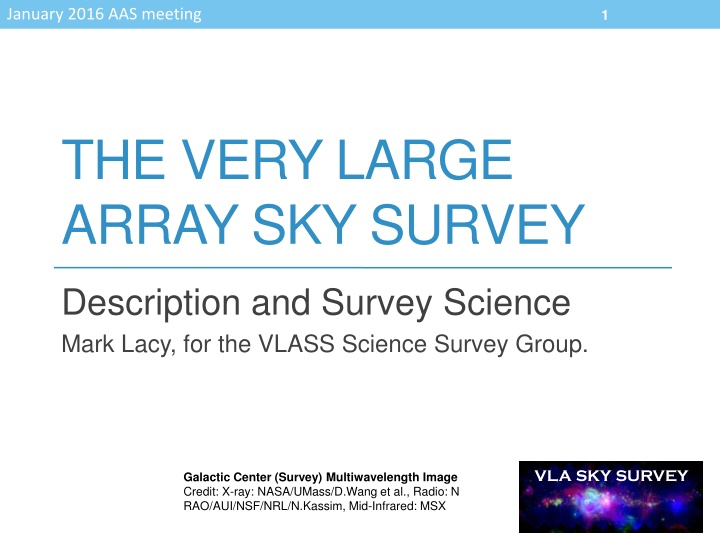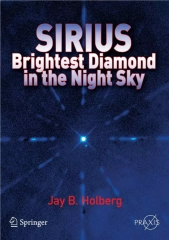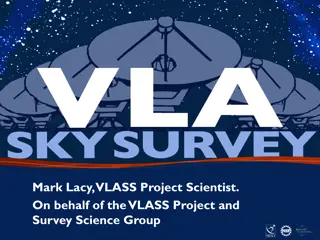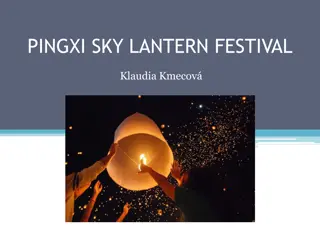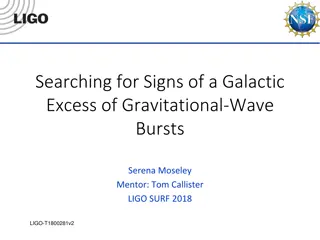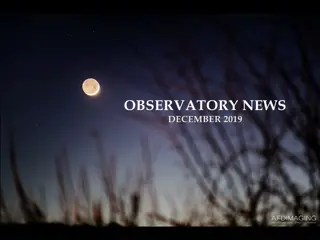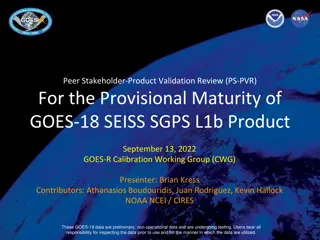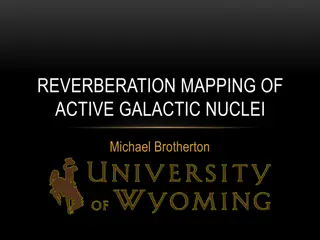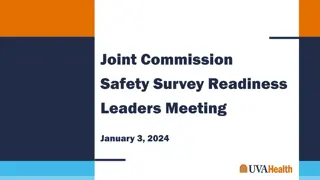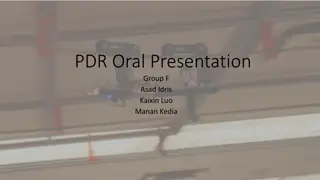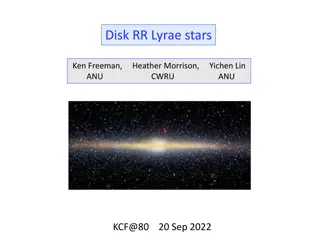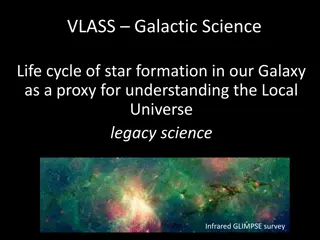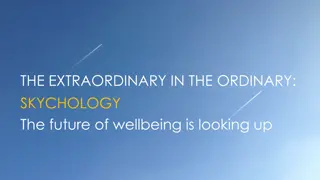VLASS Sky Survey and Galactic Science Highlights
The January 2016 AAS meeting discussed the VLASS Sky Survey, highlighting survey parameters, science drivers, and the potential for new discoveries in galactic science. Key topics included multiwavelength imaging, Faraday tomography, AGN and galaxy evolution studies, and the search for exotic systems like pulsar-BH binaries. The survey aims to open new frontiers in radio astronomy, offering insights into cosmic phenomena and aiding in the identification of various celestial objects.
Download Presentation

Please find below an Image/Link to download the presentation.
The content on the website is provided AS IS for your information and personal use only. It may not be sold, licensed, or shared on other websites without obtaining consent from the author.If you encounter any issues during the download, it is possible that the publisher has removed the file from their server.
You are allowed to download the files provided on this website for personal or commercial use, subject to the condition that they are used lawfully. All files are the property of their respective owners.
The content on the website is provided AS IS for your information and personal use only. It may not be sold, licensed, or shared on other websites without obtaining consent from the author.
E N D
Presentation Transcript
January 2016 AAS meeting 1 THE VERY LARGE ARRAY SKY SURVEY Description and Survey Science Mark Lacy, for the VLASS Science Survey Group. VLA SKY SURVEY Galactic Center (Survey) Multiwavelength Image Credit: X-ray: NASA/UMass/D.Wang et al., Radio: N RAO/AUI/NSF/NRL/N.Kassim, Mid-Infrared: MSX
January 2016 AAS meeting 2 Survey parameters All-sky (above declination -40 deg). Resolution: 2.5 Frequency: 3GHz (2-4GHz less RFI affected regions) Cadence: 3 epochs separated by 32 months, starting Oct 2017 pending reviews (pilot survey summer 2016). RMS per epoch: 120muJy Co-added RMS: 69muJy I,Q,U polarization. VLA SKY SURVEY
January 2016 AAS meeting 3 Science drivers Hidden explosions and other radio transients. Faraday tomography of the magnetic sky. AGN and galaxy evolution in concert with new optical/IR surveys. Peering through our dusty Galaxy. Missing physics VLA SKY SURVEY
January 2016 AAS meeting 4 VLASS will open new parameter space for finding dusty/unbeamed GRBs, SNe, compact object mergers Hidden explosions VLA SKY SURVEY
January 2016 AAS meeting 5 Faraday tomography The properties of the magneto-ionic medium in AGNs and galaxies: wide bandwidth (2-4GHz less some RFI affected regions) will allow rotation measure estimates for ~105 sources. Essential for studies of AGN feedback. Faraday rotation map of Milky Way will increase in resolution by a factor of ~10. Oppermann et al. 2012 (NVSS) VLA SKY SURVEY
January 2016 AAS meeting 6 AGN and galaxy evolution New generations of wide area optical/IR surveys will benefit from a high resolution radio survey for cross- identifications. PanSTARRs, DES, LSST need radio data of comparable resolution to make reliable identifications as source density is so high (~50-100/square arcminute). In conjunction with photo-zs from these surveys (+WISE), will be able to determine accurate demographics of radio- loud/intermediate population, important for constraining AGN feedback theories. VLASS will provide a baseline for follow-up of AGN flares and candidate black hole merger events from gravitational wave detectors. VLA SKY SURVEY
January 2016 AAS meeting Galactic Science peering through our dusty galaxy Extreme pulsars identify candidate double neutron stars, millisecond pulsars for follow-up Potential for finding exotic systems e.g. pulsar-BH binary with which to refine tests of GR. Cools stars with active coronae Cross-correlate variable objects in VLASS with LSST and vice- versa. Planetary nebulae Refine evolutionary models HII regions Improve census of massive star formation and galactic structure models. 7 VLA SKY SURVEY
January 2016 AAS meeting 8 Education and Outreach EPO activities have been built into the survey from the start. Will use social media to explain the survey and report on its progress. #VLASS Picture of the week Citizen Science (e.g. Radio Galaxy Zoo, transient searches). Science stories and blogs. Educational activities (in partnership with NRAO and other institutions). Science community email updates. VLA SKY SURVEY
January 2016 AAS meeting 9 How to get involved We are actively seeking scientists who are interested in helping with the survey and data products. Please email mlacy@nrao.edu with a brief description of your interests and I will put you in touch with the appropriate science or technical working group. All-sky (above declination -40 deg). Resolution: 2.5 Frequency: 3GHz (2-4GHz less RFI affected regions) Cadence: 3 epochs separated by 32 months, starting Oct 2017 (pilot survey summer 2016). RMS per epoch: 120muJy Co-added RMS: 69muJy I,Q,U polarization. VLA SKY SURVEY
